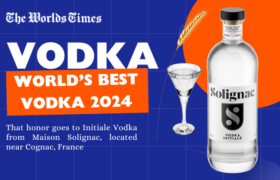In the evolving landscape of Web3, Digital Product Passports (DPPs) and Digital Product Fingerprints are pioneering new avenues for redefining ownership and authenticity. These innovative tools are reshaping how businesses approach transparency, sustainability, and trust in both the real-world and digital realms. Leveraging blockchain technology, they offer promising solutions to challenges in supply chain management, product authentication, and luxury goods verification. This overview delves into their significance, challenges, and transformative potential in today’s interconnected marketplace.
Converging DPPs and Fingerprints
We started the interview by asking, “How do Digital Product Passports and Digital Product Fingerprints collaborate to redefine ownership and authenticity in the real-world and Web3?”
Marsha Lipton replied, “Digital Product Passports, or DPPs, have become buzzwords nowadays. Yet, interpretations of this term vary among individuals, companies, and regulatory bodies, often linking it to two primary frameworks. Despite being a relatively novel concept, DPPs serve as tools for businesses to enhance transparency, sustainability, traceability, and adherence to regulatory standards, thereby streamlining their supply chain processes. Furthermore, while some companies claim to provide a comprehensive record of a product’s lifecycle from inception to disposal, the real-world implementation of blockchain-related post-sales activities presents significant challenges.
Another use of DPPs is in the post-purchase phase, incorporating a Certificate of Authenticity (COA) within the NFT framework. It’s often claimed that once minted on a blockchain, such a COA becomes immutable, permanently sealing the item’s authenticity. What a simplistic view, albeit one bought by some! Primarily, the concepts of ‘blockchain’ and ‘immutability’ apply only at the level of the ownership token tied to the digital content, which includes a digital form of the conventional paper COA. Inherent to the nature of NFTs, the digital file is susceptible to duplication and reissuance, leading to the possibility of a counterfeit item being paired with a counterfeit NFT. Moreover, even with an original NFT, the system fails to establish a verifiable connection between the physical item in possession and its corresponding COA, be it digital or physical.
So, what does NFTrends do differently? Right from the emergence of NFTs, we recognized the limitations in their use and chose to leverage them mainly for the unchangeable aspect of the NFT-digital image framework. This part of the blockchain is what we call the ownership token of the DPP, grants the private key holder the ability to access their Digital Product Passports. Yet, this is merely the start. Once you access the securely stored DPP, holding detailed information about your product, the question arises: how can you verify that the item in your possession is indeed the one the brand sold to you?
During passport control at the border, authorities don’t just depend on your physical photograph. Instead, they have you look into a camera, and this fresh image is compared with the digital version they have on file. That’s exactly what NFTrends does, albeit through a smartphone application, to authenticate that the product claimed by an individual is indeed theirs. Essentially, by utilizing the ownership token, the individual enables NFTrends to retrieve the product’s digital fingerprints created at the time the DPP was established. The system’s technology then verifies these fingerprints against a unique pattern specific to the individual item, distinguishing it not just from the entire production line but also from any smaller groupings within it, down to the individual piece.”
Capital Markets Insight
The Worlds Times: With your extensive capital markets experience, how did it influence the development of the Digital Product Passport system at Numeraire Future Trends?
Marsha Lipton replied, “I have unique exposure to capital markets, having started my trading career at Bankers Trust, a hotbed of derivatives in the ’90s, and culminating as a Managing Director at JPMorgan Chase. Corporate life teaches one many lessons, such as the necessity of iron discipline and the importance of timely delivery. From trading, I’ve learned the significance of flexibility and the ability to pivot based on circumstances, new information, and opportunities. It teaches you about risk management strategies, particularly when you need to be somewhat lenient, which is not an easy feat for control freaks like me. Yet, these approaches are consistently applied within the structured bounds of if-then planning.”
Applying Wall Street Precision
The Worlds Times: Drawing from your role as a former Managing Director at JPMorgan Chase, how did your experience shape Numeraire Future Trends’ approach to security and trust in luxury goods and art?
Marsha Lipton replied, “Being a Wall Street executive teaches one to be very attentive to client needs, precise in communications, and cautious about overpromising. These practices are essential in the startup environment, where the allure of grandeur is strong. This sentiment resonates strongly within the VC community, and especially in Silicon Valley, where terms like ‘revolutionary approach’ are so commonplace that even the slightest incremental improvements in business practices must be heralded as ground-breaking.
Therefore, our approach to luxury and art is precise and measured: While we ensure fully immutable provenance and ownership tracking, full unquestionable authentication is feasible only for new luxury items or artworks. For existing pieces, authentication by art appraisers and luxury authentication processes is required and integrated into DPPs via multi-signature mechanisms for our collaborating specialists. It’s worth noting that, despite advancements in AI for authenticating existing artworks, these have yet to surpass the reliability of traditional methods employed by professional art appraisers and authenticators.
On the topic of data security, from the outset of our operations, we have consistently maintained a standard of cloud security on par with that of the banking industry.”
Beyond Conventional Methods
The Worlds Times: What distinguishes Digital Product Fingerprints from traditional RFID and NFC microchips in ensuring the security and authenticity of luxury items?
Marsha Lipton replied, “At NFTrends, we strongly believe that in an era dominated by ‘superfakes’, advanced digital printing, and intricate hacking techniques, any feature that can be printed (such as QR codes or serial numbers) or integrated (like RFIDs or NFCs) onto an item is susceptible to replication, removal, or other forms of tampering. Regarding using NFTs to ‘preserve’ COAs for luxury goods and artworks, consider how many cloned and counterfeit NFTs exist on the largest NFT platform, OpenSea – hint: it’s more than two-thirds. Therefore, only DPPs offered by NFTrends provide guaranteed provenance, ownership, and experiences. Our mission is to elevate authentication standards, catering to both physical and digital domains.”
Balancing Innovation and Privacy
The Worlds Times: How does Numeraire Future Trends address privacy concerns associated with technologies like RFID and NFC, ensuring the protection of valuable collections?
Marsha Lipton replied, “We believe that RFIDs and NFCs, as well as QR codes, play a crucial role in the supply chain. We acknowledge their value for high-volume production when the cost of an individual item doesn’t justify the expense of sophisticated hacking or tampering methods. Moreover, fingerprinting each object takes a certain amount of time and dedication, which may not be feasible for some brands, especially those with high production volumes.
Here, we arrive at a crucial point we wish to highlight: We do not endorse the notion of a universal one-size-fits-all solution. In fact, we are sceptical that such a solution exists for the entire spectrum of fashion and art. However, our solution targets the high-end segment, where exclusivity and privacy are paramount. Our DPPs are uniquely designed to remove any intermediaries, including susceptible chips, between a high-value item and its owner. Yet, the connection between them remains permanently secure.”
Preserving Luxury Value
The World’s Times: In what ways do Immutable DPPs with Digital Product Fingerprints contribute to maintaining the value of luxury items and creating a trustworthy resale market?
Marsha Lipton replied, “As of now, Digital Product Fingerprints represent the only method for immutably linking a luxury item with its rightful owner. A Digital Product Passport (DPP) is created by a brand at the time the item is registered in the brand’s ledger; its digital fingerprints, taken simultaneously, immutably connect the physical item to its digital passport. Moreover, since only the rightful owner of the item, and consequently the DPP, possesses the private key— which we metaphorically refer to as ‘the key to the treasure chest’— the relationship triangle between the owner, DPP, and luxury product is securely established. Therefore, whoever holds the private key to the DPP has access to the database with the product’s fingerprints, which are algorithmically and automatically matched with the physical imperfections of the item. This person is the rightful owner of the authentic luxury product. Such a system gives potential buyers the confidence to purchase resale items, secure in the knowledge that they will become the new owner of the physical item and the private key to its DPP.”
Ensuring Artistic Integrity
The World’s Times: How do Digital Product Fingerprints act as guardians of artwork, eliminating practices like passing off imitations as the work of renowned artists?
Marsha Lipton replied, “Digital product fingerprints capture the unique manner in which each artwork or luxury item is handcrafted or put together. The initial method of creation is irreplaceable. Therefore, even if the visual elements of the piece can be skilfully copied and the materials are identical—a scenario not uncommon in contemporary works—the unique markers of the original, which constitute its digital fingerprints, always, remain. Since these fingerprints are matched with the object of authentication using sophisticated image recognition algorithms, the guessing game is over.”
Insights for Aspiring Entrepreneurs
Lastly we asked, “Do you have a piece of advice that you would like to give to people just starting on their business journey?”
“I might disappoint many people, but I never give advice. I am fully aware that what works for one person might not work for another. I’ve seen some nerds excel in investment banking and entrepreneurship, while others have struggled in their entire lives. I know of great salespeople who carved out amazingly productive niches for themselves, and others who did not.
However, the one piece of wisdom I can share, which is not originally mine, is “Never, never, never give up!”.” Marsha Lipton concluded
Connect with Marsha Lipton & NFTrends on LinkedIn
Visit NFTrends to learn more about it
Also Read:
An Insight into Salim Khan’s Rise with IMEX Shipping & Logistics in Dubai
Eric Dumas: A Rising Star in Europe’s Air Cargo Landscape
The SHOWER SHIRT® Redefines Post-Surgical Hygiene: Lisa F. Crites





























































